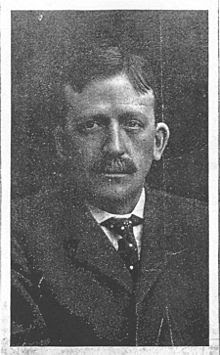Frank Novak was born on April 5, 1865 in Webster County, Iowa. He ran a mercantile store in Walford Ohio. He suffered some “financial reverses” (actually a gambling addiction) and put the business in debt. So, in frustration he took out a $30,000 life and accident insurance policy on himself. Then, on February 2, 1897 lured his friend Edward Murray to the store, crushed his skull, robbed him and then burned the store over him to cover the crime. He fled the scene, I found some evidence that Novak’s wife, Mary had claimed that he died in the fire, thus claiming the life insurance. But insurance companies are not so easily fooled. He was pursued for six months across the continent and to Alaska by Detective C.C. Perrin of Chicago or Denver. In total they traveled 26,000 miles back and forth across the continent. Finally in Washington, Perrin discovered that Novak had taken the steamer Al-Ki at Port Townsend on February 23 to Juneau. Perrin took the steamer Mexico on May 24 to Skagway. Both men had to secure provisions to cross the Chilkoot Pass.
Detective Perrin spent many days on the Chilkoot Pass looking for Novak. He then briefly saw him as his boat passed Novak’s boat on Lake Bennet. He followed Novak to Dawson where he got a warrant from the Canadians to arrest him and take him back to Ohio for trial. Novak was claiming that his name was J.A. Smith. But when Captain Constantine compared the dental records (possibly dentures) of Novak with his dentists records from Ohio, the Mounties decided that they had their man!
On the way back through St Michael, Novak told Perrin that back in Iowa, he kept a bottle of whiskey impregnated with morphine in the store and found Murray drinking it. Later during the fire he tried to rescue him but was unable to (perhaps because he had first bashed in his skull). Such a story! Perrin was not swayed and succeeded in bringing the murderer back to Iowa for trial.
In November 1897 he was brought back, tried, and convicted of second degree murder and put in the Anamosa prison in Ohio. A second trial by the Supreme Court upheld the lower court decision. By 1903 he was involved in photography and was on the prison band being a model prisoner and his friends petitioned the Governor for clemency. Not sure if that happened as he was serving a life sentence. He died in Chicago on July 12, 1930 but was brought back home to be buried in Cedar Rapids, Iowa, a few miles from the scene of the crime in Walford.
The Carroll Herald, April 1, 1903. The Baltimore Underwriter October 1897. Two Years in the Klondike and the Alaskan Gold Fields by Haskell.





